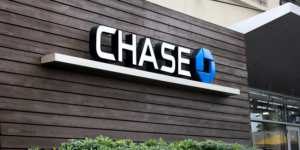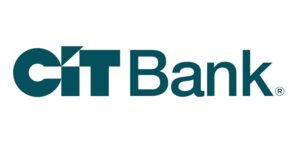
We’ve all done this before, we tend to overestimate the number of funds available in our checking accounts, run out of money before payday, or bounced a check. If you shop or pay bills by using your debit card or by writing a check when you don’t have the cash in your bank account, you may be relieved to find your spending covered by your bank’s overdraft protection.
Overdraft protection makes it possible to spend more than your available balance in your checking account, which can be a lifesaver if you’re ever in an emergency.
Consumer banks used to automatically add this feature to all checking accounts, but have now begun offering the option to opt out. Some people may not want overdraft protection because it can be expensive or it may not fit their needs.
The Mechanics of Overdraft Protection
If you decided to opt in to overdraft protection, the bank will cover a certain amount of your balance if you go negative. For example, if you need to spend $100 and you don’t have that amount in your bank account, or the funds aren’t available yet, you’re covered.
The bank might still approve the transaction and will simply notify you that your next deposit will cover the $100 that you owe.
Keep in mind that different banks in different places will have their own policies regarding the dollar amount that their overdraft protection plan covers. You might also have this privilege revoked if you frequently write checks in excess of our available balance.
The Pros and Cons
An important thing to keep in mind is that it still costs you money to have overdrafts. One of the initial reasons you even have overdrafts is because you didn’t have the money available, and with the overdraft fees, you will have even less. This is why overdraft protection isn’t great in the long run.
Overdraft protection is meant to save you in a pinch and is only a temporary solution. It can also help you avoid penalties or late fees if your wrote a check to pay for your car, credit card, or other bills.
As another benefit, you can avoid bounced check fees from retailers, assuming you pay by check. If you don’t have overdraft protection, you may have to pay a Non-Sufficient Funds (NSF) fee to your bank and an additional Returned-Check fee to the retailer.
The Cost of Overdraft Protection
Banks do not normally offer overdraft protection for free. They charge fees to keep you from abusing the service, and because it creates a source of revenue for the bank. That is why it is important that you understand the potential charges that might happen if you decide to add this feature to your account. The charge will be similar to your bank’s Non-Sufficient-Funds fee.
The next fee you might incur are interest costs. Depending on your overdraft protection plan, the amount of your overdraft might be considered a “loan.” In that case, the bank charges interest until you repay. This option, known as an overdraft line of credit, is usually less expensive than paying a flat fee for each overdraft that hits your account.
Finally, if you use overdraft protection too often, it may allow you to get into bad habits that end up costing a lot over your lifetime. Depending on overdraft protection may be a sign that you could benefit from learning to better manage your cash flow.
Although bounced checks don’t appear immediately on your credit report, they can affect how small financial institutions evaluate your creditworthiness. They can also cost a lot of money, lead to civil and criminal charges, and eventually damage your credit.
Minimizing Fees
If you find you do best with an overdraft protection program, shop different banks to minimize your costs. After all, it’s better to keep as much money as possible for your other expenses, rather than having it used to cover bounced-check fees. Below you’ll find some questions to ask banks, that will help you find the best overdraft protection plan:
- Is there an interest rate or flat fee for overdrafts? Depending on the frequency vs. amount of overdrafts that you experience, one method can cost less than the other.
- Can you link your checking account to a source of funds that will be used before the overdraft feature? If you can attach a credit card, or better yet a savings account to pull cash from, you may avoid overdraft fees.
- Would an overdraft line of credit be more advantageous for you? Ask your banker what options they have available for you. Find out exactly how each process works and the consequences of each choice.
You’ve probably guessed this already, but the best way to minimize overdraft protections fees is to prevent them altogether. Aside from doing some basic financial tracking using a check register, you can also keep tabs on your bank account balances by using online banking, or banking apps on your mobile phone, to verify the number of funds in your checking account.
However, if you know you’ll be in a tight financial situation in the near future, it is best to be proactive. If you know your budget is going to be low, try to look for ways to stretch payment due dates a few extra days out.
You can call the party that you owe a check to, such as a credit card company, student loan holder or utility company, mention your current, temporary cash shortage, and ask if they can wait a few days for your payment. It’s also wise to ask if they can waive late fees since you called ahead to let them know.
You can minimize problems if you keep frequent tabs on your checking account balance, and factor in any checks you’ve already written but that have yet to clear your bank account.
The Legality of Overdraft Fees
Since July 2010, federal law changed how banks, credit unions, and financial institutions are allowed to charge overdraft fees. Before, they used to automatically add overdraft protection to your account, and there was no way to opt out of this protection.
This resulted in consumers paying billions in fees to banks for small mistakes in their checking account. For example, someone could be paying for a $38 latte, $3 for the coffee and $35 for the overdraft charge.
 |
 |
Bottom Line
Overdraft protection was meant to be a tool that could help consumers pay for things if they were a little short on cash. However, this “protection” has some downsides that may make you think twice.
Not only are there actual fees, but you may pick up bad habits if you tend to overspend. If you like posts like this, check out our list of bank guides!




Leave a Reply